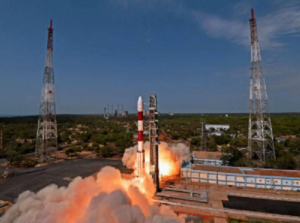
HIGHLIGHTS:
- These satellites are used for keeping an eye on enemies both on land and sea
- The Cartosat-2 can accurately spot objects within a square of 0.6 metre by 0.6 metres
- The 13 satellites include Cartosat 1 and 2 series and Risat-1 and Risat-2
NEW DELHI: With the successful launch of “eye in the sky” Cartosat-2E satellite with surveillance capabilities last Friday, the total number of satellites being used for military purpose has gone up to 13, an ISRO source said.
These satellites, which can be used for surveillance and mapping border areas, are primarily used for keeping an eye on enemies both on land and sea.
“Most of these remote-sensing satellites are placed in the near-earth orbit. Placing these satellites at the sun-synchronous polar orbit (about 200-1,200 km above the Earth’s surface) helps in better scanning of the earth. However, some of these satellites have also been put in the geo orbit,” the source said. The recently launched 712-kg Cartosat-2 series spacecraft is an advanced remote sensing satellite capable of providing scene-specific spot imagery.
The Cartosat-2 can accurately spot objects within a square of 0.6 metre by 0.6 metres.
“The 13 satellites used by the military for surveillance include Cartosat 1 and 2 series and Risat-1 and Risat-2,” the Isro source said.
The Navy also uses Gsat-7 for real-time communication among its warships, submarines, aircraft and land systems. India also has the capability to launch anti-satellite weapon (ASAT), which is meant to destroy enemy satellites.
Only the US, Russia, and China are known to have developed these weapons.
However, Isro has no intention of engaging in such an anti-satellite weapon project.
Tapan Misra, director of Space Applications Centre, said, “Isro follows international norms, which prohibit member space agencies from militarising outer space.”
Explaining how India’s ballistic missile can double up as a satellite launcher in times of need, Ravi Gupta, defence technology expert and former director (public interface), Defence Research Development Organisation (DRDO), said, “Technolgical capabilities indigenously evolved in the process of development of Agni-V long -range ballistic missile and proven through series of repeated successful tests can be readily employed for ‘satellite launch on demand’ if needed.
The 5,000-km-plus missile has demonstrated capabilities of reaching well beyond altitudes characteristic of relevant satellites with required payloads. He said, “Similarly, these technologies, combined with technologies developed for the indigenous ballistic missile defence system, if needed, can be used for developing an anti-satellite weapon system. It’s a matter of putting the available indigenous technologies for a required application.”
Ravi Gupta also said, “The time of face-to-face warfare is nearly gone. Technologies are making modern warfare more or less contactless and more and more dependent on surveillance and remote sensing, real-time situational awareness, information processing and communication. Satellites have, therefore, emerged as stratagic assets playing a critical role in the outcome of war, making the spatial technological abilities not just important but a game changer.”
Source: timesofindia.indiatimes.com


















